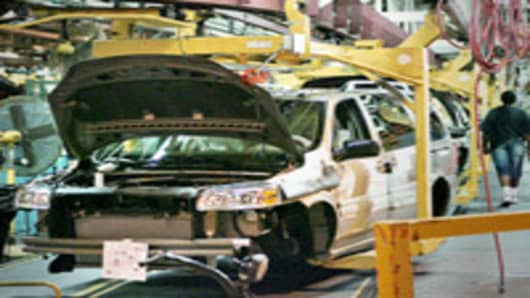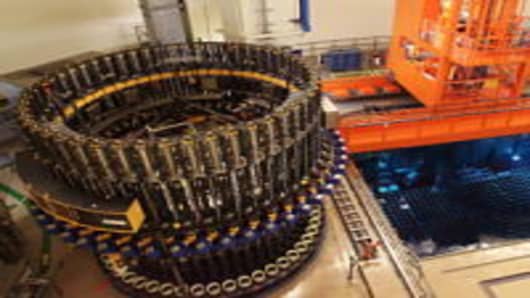The years following the Great Recession will feature the reemergence of U.S. manufacturing—everything from aeronautics to robots in warehouses, to high-speed cotton mills and 3-D model-making—but this generation of manufacturing will be polished and enhanced with technology.
“Change is good, and disruption is the ultimate change,” said Chris Anderson, editor-in-chief of Wired, using the buzzword of the third annual Wired Business Conferenceat the Museum of Jewish History in New York.
Anderson and other speakers, including Microsoft founder Bill Gates and home design icon Martha Stewart, threaded the conference with an unmistakable theme: building things is a path toward American economic growth.
“We are democratizating the tools of production now,” Anderson said. “If done right, we can power manufacturing in the 21st century.”
Carl Bass, CEO of Autodesk , was the poster child for manufacturing chic. His company, which creates design software for architecture, entertainment, and engineering industries, is about to release a free, downloadable design tool—called 123D—that allows anyone to design 3-D models, and then turn them into real-life products. (Watch video interview with Bass below.)
He brought out a chair designed with the software, then laser-cut and built from cardboard, and an elephant sculpture made from metal. Bass said users can design a product, download the plans, and build it themselves. Or they can design products and have Autodesk’s partner companies build and ship to the user’s house.
“We just kept tapping into this unbelievable company of people who want to make things,” Bass said.
More interesting, said Bass, are emerging technologies that allow users to take photos from their mobile phones, manipulate the images in 3-D, then create designs that can be built into real-life products.
Later in the conference, Anderson interviewed Stewart, who anticipated the crafting trend and turned it into a media and manufacturing juggernaut, selling everything from magazines to utensils and tools to kitchen cabinets sold at Home Depot .
“We made a business out of DIY,” she said. “We turn dreamers into doers. We give you excellent plans and templates.”
Even Bill Gates got on the manufacturing bandwagon. Gates and Anderson riveted the audience, perhaps surprisingly, with a discussion about thorium reactors, photovoltaic batteries, and other pointy-headed science.
Central to the conversation was Gates’ contention that nuclear energy, despite the Fukushima disaster in Japanin March, is a critically important energy source poised for growth. Gates got involved with inventors trying to make nuclear reactors cheaper and safer than today’s plants. In 2008, he funded a start-up called TerraPower LLC in Bellevue, Wash., and is now its chairman.
But did the Japan disaster give him pause? No—the world is so hungry for energy that there is no choice but to move forward with nuclear power, he said.
"This is the place where the ideas are.""
“The (energy) status quo is pretty unacceptable in terms of security, costs, and environmental impact,” Gates told Anderson. “Energy is fundamental to farming, transportation, and heating. If you could think of one advance that would make society better, reducing the cost of energy would be at the top of the list.
“But there aren’t many ways to get energy,” he said. “And nuclear is one of the very few.”
All energy options—among them nuclear, natural gas, coal, wind, bio-fuels, solar, oil—have “big problems,” he said. Nuclear energy’s problems include cost, waste disposal, proliferation, safety, and fuel limitations.
“The good news (about nuclear) is there has hardly been any innovation in the last 30 years, so there is room to do something different and quite dramatic,” Gates said.
He contended that the Fukushima disaster could have been avoided: the plant was designed in the 1960s, its emergency plans were weak, and—mostly—the execution of those plans was weak. The disaster’s effect on the nuclear industry will be “very negative,” he said.
But he contended that “compared to coal (operations) or natural gas (plants), nuclear plants have killed way, way less people. But they’re big events, so they’re more visible.”
TerraPower, he said, has designed a reactor that, in case of an emergency, shuts itself down in such a way that it can never operate again. As a result, it is “intrinsically safe,” Gates said.
But there isn’t much political will to build such a reactor in the United States or, indeed, most Western countries. Historically, the United States has been the leader in nuclear energy. Of the 400 plants in the world today, 100 of them are in the United States, and 70 are in France. But now, China has 20 plants, with 28 under construction. India and Russia are also aggressively building new plants.
Gates’ hope is that an even newer generation of nuclear reactors, including designs created by TerraPower, will be built soon—though probably in Asia.
He said solar energy is at this point merely a “cute” diversion because it isn’t economical on a large scale. Rich people can put solar panels on their houses—Gates does—but that isn’t a solution. Nor is ethanol, because growing ethanol-bound corn diverts land away from food production. That’s fine for rich countries like ours, but not poor ones. “It’s a form of farm subsidy,” he said.
Still, even if we’re “sloppy” with resources because we have that luxury, the United States has one critical advantage that will “blow everyone away.”
“This is the place where the ideas are,” he said. “The people get what (Terrapower) is doing—that expertise is overwhelmingly in the United States.”





